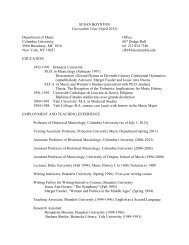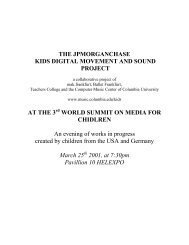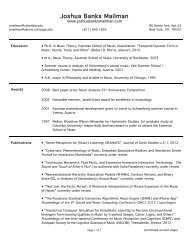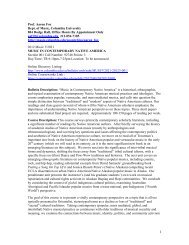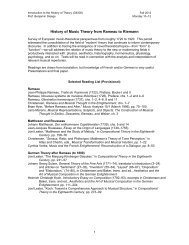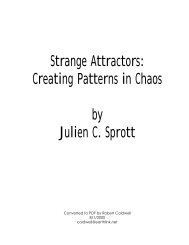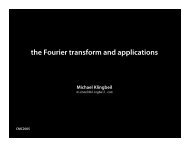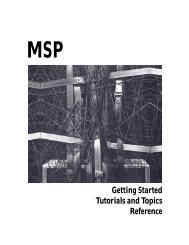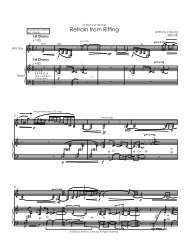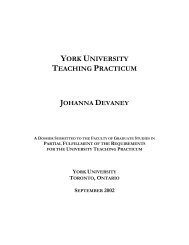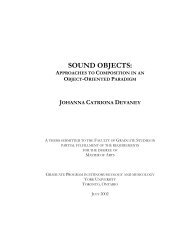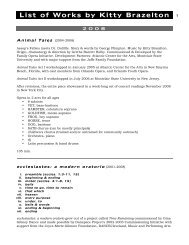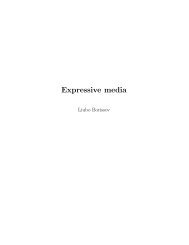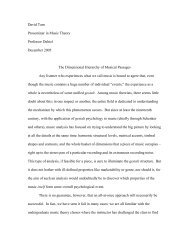Text, including the two scores - Columbia University Department of ...
Text, including the two scores - Columbia University Department of ...
Text, including the two scores - Columbia University Department of ...
You also want an ePaper? Increase the reach of your titles
YUMPU automatically turns print PDFs into web optimized ePapers that Google loves.
eenter more placidly, with <strong>the</strong> entrance <strong>of</strong> <strong>the</strong> carve effect now correlating to a reduction in instrumental pitches, while <strong>the</strong> swelling <strong>of</strong> <strong>the</strong> wrapped brightness addition in <strong>the</strong> video mirrored by bowing shifts to sul tasto and back. Instruments<br />
Here, audio and video samples are examples <strong>of</strong> <strong>the</strong> ‘Splice’ process, which makes quick cuts between disparate samples at moments <strong>of</strong> greatest spectral similarity. The durations <strong>of</strong> <strong>the</strong> splice samples shorten over <strong>the</strong> section, which functions as a transition from <strong>the</strong> electronic aural ambience <strong>of</strong> <strong>the</strong> previous 9.<br />
into <strong>the</strong> more percussive nature <strong>of</strong> <strong>the</strong> rest <strong>of</strong> <strong>the</strong> piece. This process is combined with a duo instrumental riff culled from <strong>the</strong> Vertex process and <strong>the</strong>n sections<br />
with its downward cycles slightly rhythmically <strong>of</strong>fset from one ano<strong>the</strong>r. A string chord swell punctuates <strong>the</strong> introduction <strong>of</strong> <strong>the</strong> ‘carve’ effect and a zoom into <strong>the</strong> video material. 10. This section is a brief revisitation <strong>of</strong> material from section 4, with <strong>the</strong> looped,<br />
<strong>of</strong> a couple <strong>of</strong> distorted and degraded hits (along with distorted instrumental attacks). The kaleidoscope entrance here is mirrored temporally as a doubling, and <strong>the</strong>n a quadrupling, <strong>of</strong> note attacks. 11. The sixteenth note figures <strong>of</strong> <strong>the</strong> end <strong>of</strong> <strong>the</strong> previous section are a transition substitution<br />
<strong>the</strong> figuration here, which is a repetition <strong>of</strong> <strong>the</strong> end <strong>of</strong> section 7. The source score (from which an algorithmic process generated section 7) is <strong>the</strong>n to<br />
instrumentally in its original form, without electronics. Immediately upon its conclusion ano<strong>the</strong>r algorithmic process acts upon that source score material, a process that gradually interpolates pitch and rhythm data between <strong>the</strong> original and its fragmented reconstruction. This serves as a momentary<br />
presented<br />
54



